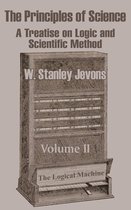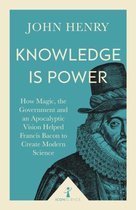The Science of Conjecture Evidence and Probability before Pascal
Afbeeldingen
Sla de afbeeldingen overArtikel vergelijken
- Engels
- Paperback
- 9780801871092
- 18 oktober 2002
- 520 pagina's
Samenvatting
How did we make reliable predictions before Pascal and Fermat's discovery of the mathematics of probability in 1654? What methods in law, science, commerce, philosophy, and logic helped us to get at the truth in cases where certainty was not attainable? In The Science of Conjecture, James Franklin examines how judges, witch inquisitors, and juries evaluated evidence; how scientists weighed reasons for and against scientific theories; and how merchants counted shipwrecks to determine insurance rates.
The Science of Conjecture provides a history of rational methods of dealing with uncertainty and explores the coming to consciousness of the human understanding of risk.
"A remarkable book. Mr. Franklin writes clearly and exhibits a wry wit. But he also ranges knowledgeably across many disciplines and over many centuries."—Wall Street Journal
"The Science of Conjecture opens an old chest of human attempts to draw order from havoc and wipes clean the rust from some cast-off classical tools that can now be reused to help build a framework for the unpredictable future."—Science
"Franklin's style is clear and fluent, with an occasional sly Gibbonian aside to make the reader chuckle."—New Criterion
James Franklin is a professor in the School of Mathematics and Statistics at the University of New South Wales.
Before Pascal and Fermat's discovery of the mathematics of probability in 1654, how did we make reliable predictions? What methods in law, science, commerce, philosophy and logic helped us to get at the truth in cases where certainty was not attainable? In this book, James Franklin examines how judges, witch inquisitors and juries evaluated evidence; scientists weighed reasons for and against scientific theories; and merchants counted shipwrecks to determine insurance rates. Sometimes this type of reasoning avoided numbers entirely, as in the legal standard of "proof beyond a reasonable doubt"; at other times it involved rough numerical estimates, as in gambling odds or the level of risk in chance events. The book provides a history of rational methods of dealing with uncertainty. Everyone can take a rough account of risk, Franklin argues, but understanding the principles of probability and using them to improve performance poses serious problems, the solution to which we have only learned over many generations and after much trial and error. This study explores the coming to consciousness of the human understanding of risk.
Productspecificaties
Inhoud
- Taal
- en
- Bindwijze
- Paperback
- Oorspronkelijke releasedatum
- 18 oktober 2002
- Aantal pagina's
- 520
- Illustraties
- Nee
Betrokkenen
- Hoofdauteur
- James Franklin
- Hoofduitgeverij
- Johns Hopkins University Press
Overige kenmerken
- Editie
- annotated edition
- Product breedte
- 156 mm
- Product hoogte
- 27 mm
- Product lengte
- 235 mm
- Studieboek
- Nee
- Verpakking breedte
- 156 mm
- Verpakking hoogte
- 27 mm
- Verpakking lengte
- 235 mm
- Verpakkingsgewicht
- 703 g
EAN
- EAN
- 9780801871092
Je vindt dit artikel in
- Categorieën
- Boek, ebook of luisterboek?
- Boek
- Taal
- Engels
- Beschikbaarheid
- Leverbaar
- Studieboek of algemeen
- Algemene boeken
Kies gewenste uitvoering
Prijsinformatie en bestellen
De prijs van dit product is 26 euro. Dit is een tweedehands product.- Bestellen en betalen via bol
- Prijs inclusief verzendkosten, verstuurd door Den Hertog BV
- 30 dagen bedenktijd en gratis retourneren
Rapporteer dit artikel
Je wilt melding doen van illegale inhoud over dit artikel:
- Ik wil melding doen als klant
- Ik wil melding doen als autoriteit of trusted flagger
- Ik wil melding doen als partner
- Ik wil melding doen als merkhouder
Geen klant, autoriteit, trusted flagger, merkhouder of partner? Gebruik dan onderstaande link om melding te doen.









